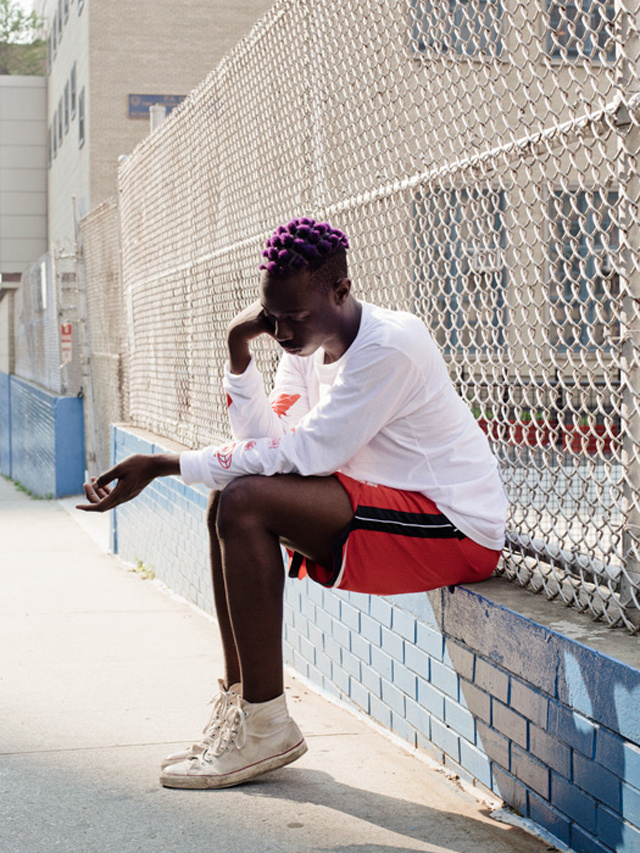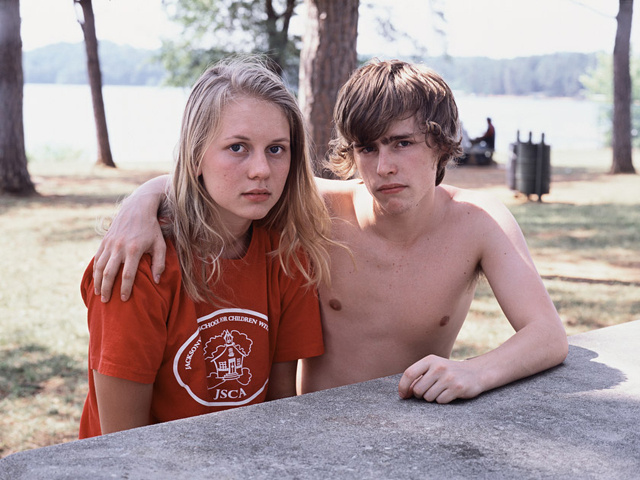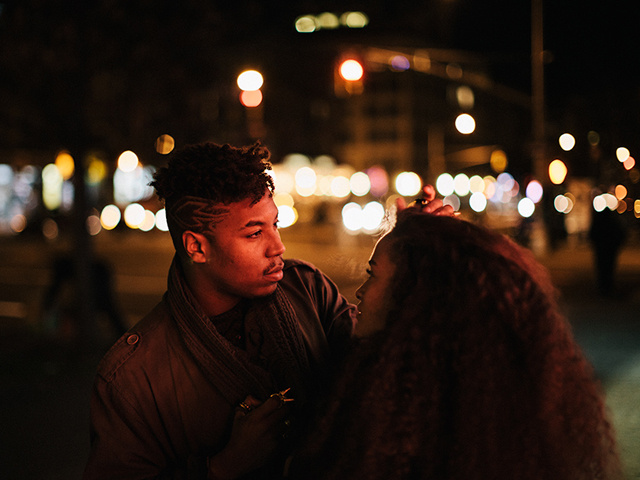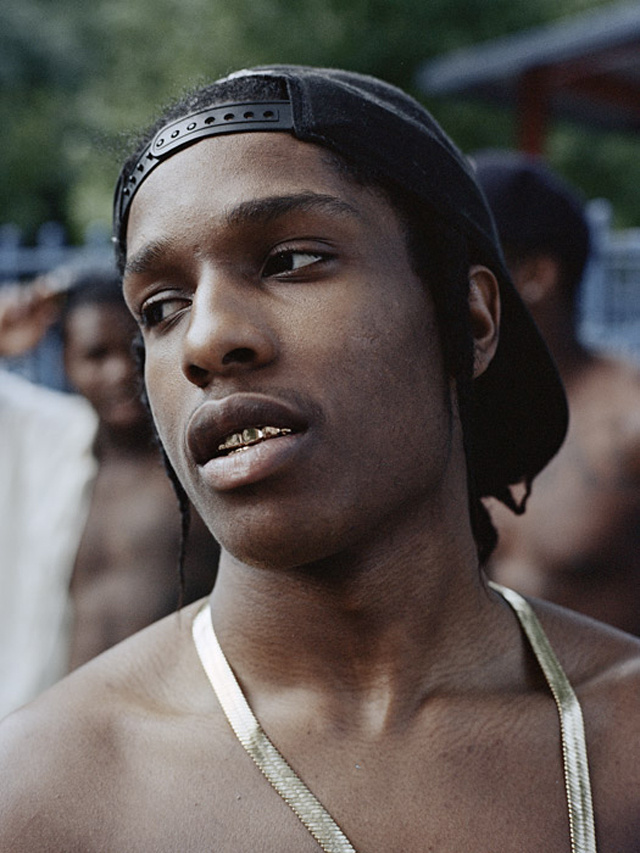
Advertisement
Geordie Wood: I am the photo editor of the magazine. I’m like a one-person photography department.Yeah, me too.
We have a lot in common. I commission and help art direct everything from cover to cover, every picture of the magazine. We generally don’t use stock images, so that means I do everything from concepting to picking the final photo.How do you do this work, while also taking editorial commissions?
I do that part-time, and the rest of the time I pursue my other work. Generally, I’m in the office one day a week, and then I’m on my computer all the time writing emails the rest of the week.Wait. You only go into the office one day a week? How did you get that job?
I feel very lucky to have this position. My first editorial shoot ever was for The Fader. I was offered the shoot while I was still a senior in college up in Syracuse, New York.You went to the SI Newhouse School, right?
I studied photojournalism there, and I edited the school’s newspaper. After two years of studying photojournalism in college, I totally fell out of love with it. My professors taught photography as a craft, not as a creative form. It was very prescriptive, and everyone’s portfolio basically looked the same when you looked around the classroom.I threw out all of my work and started over from scratch. I decided that I was going to shoot medium-format film and only use a couple of lenses. This way of working felt more real to me. Eventually, I got some of my photos in front of this guy Phil Bicker, who was creative director of The Fader. Before that, he was the art director of The Face in London. He gave Kate Moss her first shoot.
Advertisement

He gave me my big break. One morning, I was getting out of the shower in college. The phone rang, and he said, “This is Phil Bicker, The Fader. How are you?” And I was like, “Holy shit.” All I really wanted to do was work for them. About a year and a half ago, when the previous photo editor was leaving, I got the job. I had been out of college for five years when that happened. When I first started, I was trying to continue doing what the publication had always done—it added a lot of stress to my life. In the beginning, I was afraid of stumbling in front of everyone, but then I decided to start taking more risks. It’s not a good idea to sit around and do what you’ve always done, and I’m not like the people who came before me. So, I decided to swing for the fences and see what happened.

I would say one of my favorite achievements so far has been a project we did about gun violence in Chicago in the last photo issue. In previous years, the photo issue had been existing series of photographers’ personal work that we then published. For this issue, we decided to actually commission a photo essay for the first time ever. I listen to a lot of rap music; we cover a lot of rap music as well. Much of the contemporary rap music you hear centers around cultures of violence. Gang-related violence is particularly present in Chief Keef’s lyrics. (He’s a rapper from the South Side of Chicago.) As we have all seen, Chicago has more deaths than Iraq and Afghanistan. I was thinking about how we could participate in the conversation in a deeper way. So when we began to plan last year’s photo issue, I went to our editor-in-chief, Matt Schnipper, with just one idea: to address the other side of the music we cover.
Advertisement

Daniel is a close friend of mine. I called him up and said, “Listen, we have about a month to put this together. Do you want to try and do it?” We did it, and it was a success. Titled Chicago Fire, it was about twenty pages of photos in the magazine. We ended up on MSNBC and Huffington Post Live. I think that was one of the biggest things I’ve been able to do there—as you know, there are ups and downs to photo editing, victories and failures. It’s exciting when you can hit one out of the park.What’s an example of swinging for the fences? What was a risky shoot you commissioned?
The current issue has a feature on Kyary Pamyu Pamyu, one of the biggest pop stars in Japan. The way Fader might traditionally approach this would be to send a photographer to Kyary’s house and shoot her getting up, having dinner with her family—things like that. But I wanted to do the photos in a more modern way, so I sent Charlie Engman to shoot her. It happens that he lived in Japan as a kid, so he speaks fluent Japanese. We decided to try and do some digital manipulation, to take it further and make it more different. Others can be the judge of whether the shoot was successful or not, but it was taking a leap from the historical norm of the magazine.

I shoot something for every issue. I really like to keep some skin in the game; it’s cool to mix it up with the people I’m hiring and stay involved as a working photographer. I pick stuff to shoot that is interesting to me or that makes sense logistically for me to shoot. I shoot a feature for the magazine once a year. The last one I did was like a dream come true. I’m a jazz head, and one of my favorite musicians is Christian Scott—he is the leader of a new jazz generation—so I hung out with him in Harlem for four or five days and photographed him.
Advertisement

One of my most successful editorials I have shot in the past few years was a portrait of A$AP Rocky. I was the first person ever to shoot him for a magazine. Those pictures are very different than all the images that have come out since he has become more famous.I went up to Harlem one day and met up with him and all these people we now know, like A$AP Ferg and Venus X. Smoke DZA even showed up. It was a huge deal that A$AP Rocky was being photographed, because at the time he was just on YouTube. I shot him over the course of an afternoon, and a crowd gathered. People brought bottles of Cristal, and they were smoking blunts on the streets.

I did. This past year I was named one of PDN’s 30 emerging photographers to watch, so I’ve given a couple of talks for them.What advice do you give at these talks?
I think there is too much focus in our digital, self-publishing, internet world on branding, getting your work out there, promos, and newsletters. But none of that matters if you don’t have something interesting going on, if you’re not being proactive in creating, or if you’re not invested in the work. In The Fader, I’m very happy to give people who have never shot anything for a publication an assignment if they have good work. I want to hire people who are young and hungry. No matter who you are or what you’ve done, the most important photographers will always be those with a unique vision.@geordiewood@matte_mag
